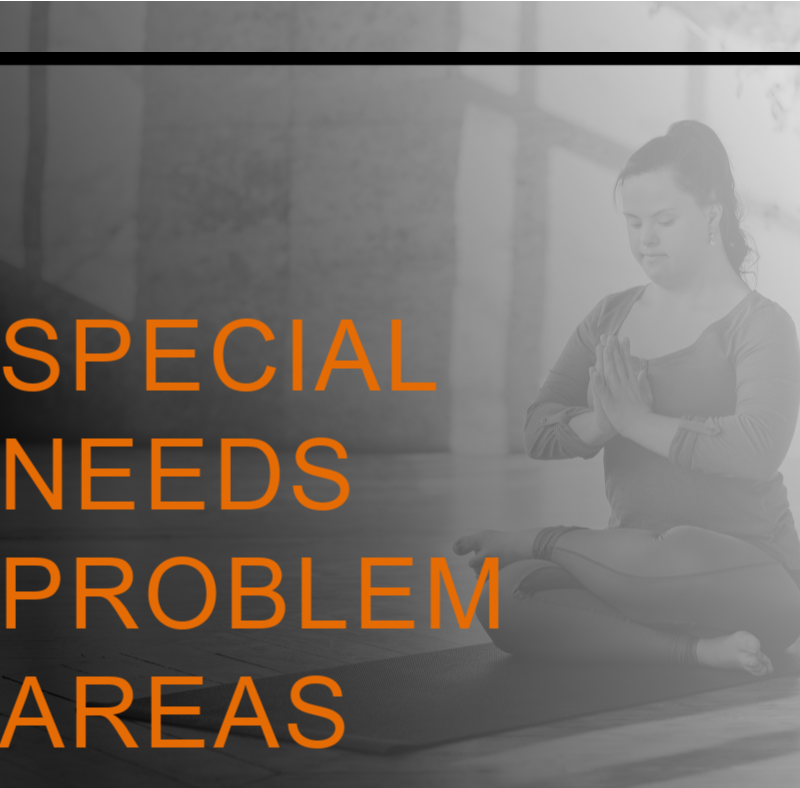
Studies have demonstrated that people with disabilities, compared to people who are able-bodied and neurotypical, are more likely to become unhealthy and generally unwell due to a lack of resources for the special needs population. Personal trainers and fitpros are in a unique position to serve as perhaps the only resource for their special needs clients and should leverage this position to help them target and resolve the problem areas that may otherwise go unaddressed.
Individuals with disabilities need human services and wellbeing programs for similar reasons any other person does—to remain well. Albeit a lower rate than individuals without incapacities, a great many people with disabilities report their wellbeing to be acceptable.
The goal to keep in mind is the same for us all—get and remain healthy so we can lead full dynamic lives. That implies having the resources to make solid decisions and understanding how to forestall disease. For individuals with disabilities, it likewise implies realizing that medical issues associated with a disability indeed can be dealt with. These issues may involve physical pain, depression, or more life-threatening hazards, like heart disease, diabetes, and obesity.
Here are the problem areas for special population clients and how to target them:
Health Conditions Related to Special Needs
Individuals with disabilities frequently are at more serious risk for medical issues that can be prevented or for which risk can be mitigated. The presence of a particular sort of disability, for example, a spinal cord injury, spina bifida, cerebral palsy or multiple sclerosis, other physical or emotional well-being conditions may be present or develop.
These are some of common health-related conditions or problem areas for special population clients:
- Fatigue
- Injury
- Psychological unwellness and wretchedness
- Overweight and obesity
- Physical pain
- Pressure sores or ulcers
Fatigue
Fatigue is an inclination towards exhaustion and sluggishness or absence of vitality. Exhaustion can influence the manner in which an individual thinks and feels. It can likewise meddle with an individual’s everyday living.
As a trainer, you know that exercise can help, but starting the workout routine will be a struggle, initially, for special populations clients. Start small — walking, stretching — and celebrate small victories to boost confidence and motivation.
Psychological Unwellness and Depression
Psychological well-being is the way we think, feel, and go about as we adapt to life. Individuals with disabilities report higher paces of depression and sadness than individuals without disabilities. There are various approaches to treating depression. Exercise can be helpful for certain individuals, though, of course, it’s not the end-all, be-all treatment.
Daily exercise for a short period of time can help, but you’re not likely to see your clients every day. We recommend at least three sessions with special population clients to rev up their dopamine and serotonin.
Weight Gain and Obesity
Youngsters and grown-ups with disabilities are less likely to be of optimal weight than those without disabilities. This is due to normalized sedentary lifestyles observed among members of the special needs community. Being overweight and obese can have genuine wellbeing ramifications for all individuals, especially people with disabilities who are already at risk.
In addition to instructing your clients during sessions, also suggest small ways they can change their daily habits when you’re not together; ADL’s provide an opportunity to squeeze in more “exercise” like taking the stairs instead of the elevator (for people with cognitive disabilities) or stretching while watching TV (for people with physical disabilities).
Physical Pain
Pain is ordinarily detailed by individuals with numerous kinds of disabilities. For a few, it can hinder their ability to work or even enjoy leisurely activities. The time span an individual encounters pain can be named either long-term (likewise called interminable) or present moment.
If your special needs client experiences chronic pain, then the best you can do is be sensitive to their situation. If your client says they can’t perform an exercise in that moment, believe them. This is not the time to push them to “do better.”
Remember: You are not a doctor and should not offer advice on chronic conditions. Advise your client to speak with their primary medical professional.
Pressure Sores or Ulcers
Pressure ulcers—otherwise called bedsores, pressure injuries, or decubitus ulcers—are wounds brought about by consistent weight on the skin. They, for the most part, form on body parts like the elbow, heel, hip, shoulder, back, and back of the head. Individuals with disabilities who are confined to a bed or utilize a wheelchair are in danger of creating pressure sores.
As you’re instructing your clients, you’ll need to be mindful of their sores. Always ask before offering hands-on assistance; not only is it more respectful, but it could also be painful for your client if you touch them without their permission first. You can also advise your client on ways to shift in their wheelchair to keep sores from forming.
Additional Special Needs Concerns, Conditions, and Prevention
Many related health conditions and ceaseless maladies can be forestalled with exercise and good nutrition. Interminable maladies are among the most widely recognized and expensive of all medical issues, despite the fact that many of these “constant” ailments can be avoided by visiting a medicinal services supplier for preventive checkups and routine screenings, and determining the best approach to oversee medical problems.
Joint pain
Joint pain—or joint irritation—is the most widely recognized cause for disability among people dwelling in the United States. It limits regular exercises for 24 million Americans. Individuals with disabilities can be at greater serious risk of having joint pain.
Encouraging movement can help with this issue. Advise your clients to give their joints a gentle massage, and show them some stretches that can help bring them some relief.
Chronic Fatigue Syndrome
Chronic Fatigue Syndrome (CFS) affects around one million people in the US. It is much more typical among adult women than men. Individuals of both genders, of all races, ethnicities, and ages (including youth) can develop CFS.
Of course, a great way to stave off this condition is to exercise regularly, yet very moderately and under supervision of a care provider. Once you get to know your clients better, you can recommend some ways they can stay active when you’re not in session together. If you know your client loves to dance, for example, show them some YouTube tutorials that will inspire them to move in ways that make them feel better.
Diabetes
Diabetes is an ongoing condition for which care and treatment can help individuals to carry on with ordinary and gainful lives. In any case, Type II Diabetes can still restrict people in their day-to-day lives. Individuals with diabetes report higher rates of disability than those detailed by the general U.S. populace.
By encouraging your clients to stay active and to eat healthier, you can help your special population clients avoid diabetes.
Practicing ABA Procedures with Special Needs Clients
Many special needs clients will undergo irritable moods or socially inappropriate outbursts. Disregard these and endure them. Some portion of your disappointment can be assuaged by taking part in the redundancy; however, now and again it’s enough for your client to realize that you’re tuning in, or they may or may not even be doing it get your attention. It may be just “stimming” or a self-alleviating technique.
You can utilize visual guides to clarify up and coming exercises with your client. Taking photos of them doing a specific exercise and afterward showing them the image is an incredible method for instructing them into the activity once more. Try to voice your praise when they are making progress on their wellness objectives, inspiring them to do the exercises, utilizing reward frameworks when appropriate.
For instance, you may say, “If you can do 10 sit-ups for me, you can hop on the tiny trampoline for cardio,” in the event that you realize this is something your customer appreciates.
Try Behavioral Therapy Techniques
While special treatment is employed with clients that have cognitive imbalance, the standards within it very well may be utilized generally with numerous different kinds of special needs. In our special needs certification course, Special Education encourages an aptitude called “offering choice.”
It’s extraordinary to spend the initial meetings with a client, permitting them to pick half of the exercises. It emphatically influences the self-viability of our customers for the better to state something like, “Listen, we have to do cardio on the treadmill and free weights. Which might you want to do first?”
When a client is permitted to share the control, we can let them make more choices. It’s improbable that they are often able to make their own choices in everyday life situations, so we can make our work in the gym a more pleasant experience for them.
Special Strong provides adapted fitness for special needs children, adolescents, and adults with autism, Down Syndrome, and other disabilities. Through our online training platform, we also provide special needs certification courses for educators, professionals, and parents who want to learn how to adapt fitness to serve the special needs population. Fitness franchise opportunities are available.
References:
https://www.aahd.us/best-practice-topic/bowel-and-or-bladder-dysfunction/
https://medlineplus.gov/ency/article/003088.htm
https://medlineplus.gov/ency/article/003088.htm
https://www.cdc.gov/ncbddd/disabilityandhealth/obesity.html
https://www.nchpad.org/281/1784/Primer~on~Pain
https://medlineplus.gov/pressuresores.html
https://www.cdc.gov/arthritis/basics/index.html
https://www.cdc.gov/me-cfs/
https://www.cdc.gov/heartdisease/prevention.htm
https://www.ninds.nih.gov/Disorders/All-Disorders/Learning-Disabilities-Information-Page
https://www.cdc.gov/me-cfs/
www.cdc.gov/diabetes/library/features/support-to-prevent-type-2.html








